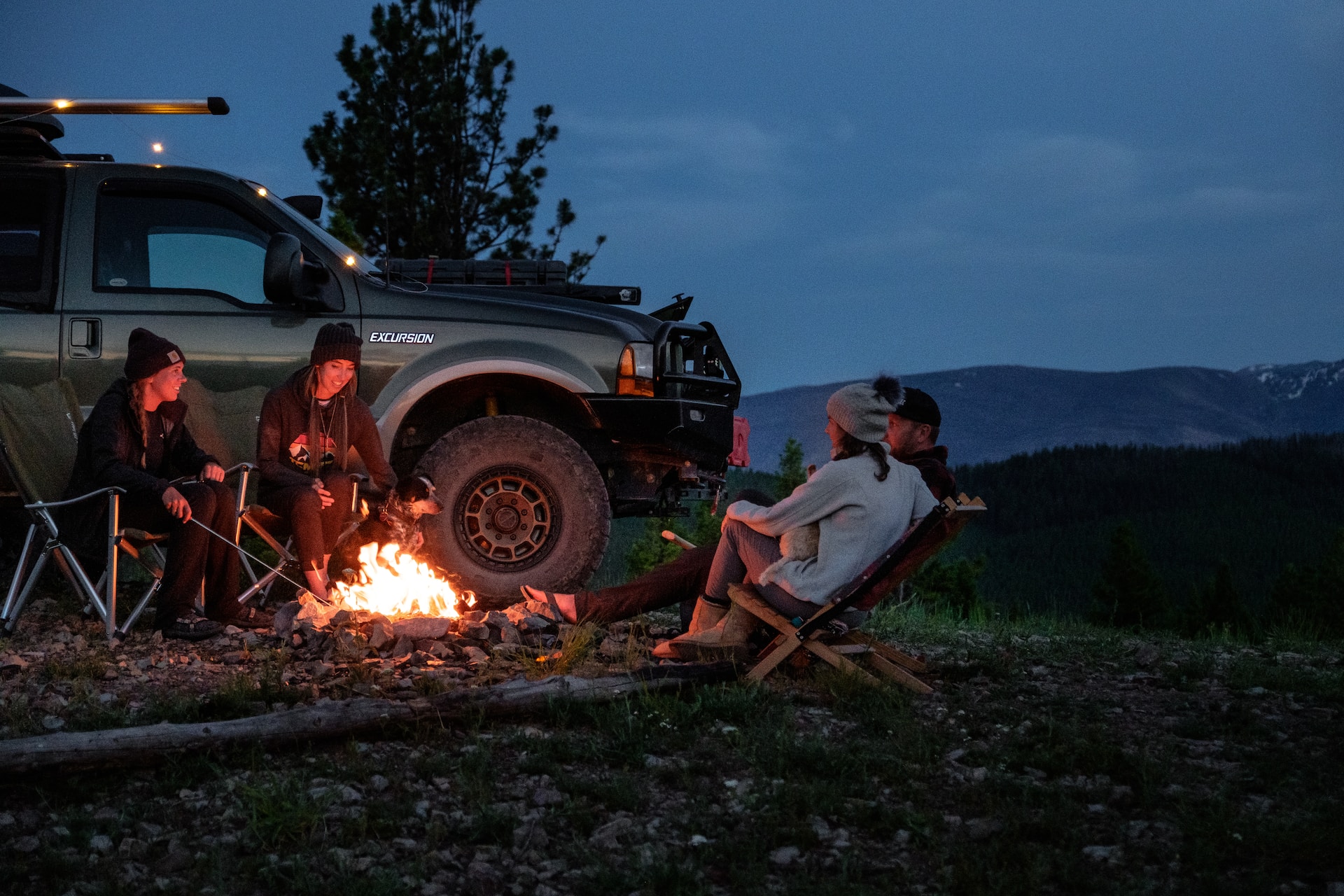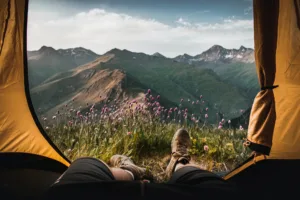Dive into the World of Overland Vehicles
The overland vehicle is more than just a mode of transportation; it’s the heart and soul of every overlanding adventure. As the popularity of overlanding has surged, so has the interest in vehicles that can withstand the demands of rugged terrains and extended journeys. This guide delves deep into the essence of the overland vehicle, from its historical roots to the modern-day marvels that adventurers swear by. Whether you’re a seasoned explorer or a newbie eager to hit the trails, understanding the intricacies of your overland vehicle is the first step to a successful expedition. Let’s embark on this journey together and uncover the world of overland vehicles.
Table of Contents
Definition and Evolution of the Overland Vehicle
Definition of an Overland Vehicle
An overland vehicle is more than just a mode of transportation; it’s a symbol of freedom, adventure, and exploration. At its core, an overland vehicle is designed to traverse long distances across varied terrains, from smooth highways to rugged off-road trails. Unlike standard vehicles, overland vehicles are equipped with features that allow them to handle challenging environments, be it deserts, mountains, or dense forests. They often come with enhanced ground clearance, robust suspension systems, and durable tires, ensuring they can tackle obstacles that would be insurmountable for regular cars.
Evolution of the Overland Vehicle
The concept of overlanding isn’t new. In fact, the history of overland vehicles can be traced back to the early days of automobile travel. Before the widespread construction of highways, most roads were unpaved, requiring vehicles with off-road capabilities.
In the early 20th century, adventurers began modifying their vehicles to handle long-distance expeditions across continents. These modifications included adding extra fuel tanks, reinforced bumpers, and rooftop tents. As technology advanced, so did the features of overland vehicles. The introduction of four-wheel drive in the mid-20th century was a game-changer, allowing vehicles to navigate even the most challenging terrains with ease.
Over the years, the popularity of overlanding grew, leading to the emergence of dedicated overland vehicles in the market. Today, many automobile manufacturers offer vehicles specifically designed for overlanding, complete with state-of-the-art features like advanced navigation systems, winches, and underbody protection.
In essence, overland vehicles have come a long way from their humble beginnings. They represent the spirit of adventure and the human desire to explore the unknown. As technology continues to advance, it’s exciting to imagine where the future of overland vehicles will take us.
Key Features of an Ideal Overland Vehicle
When it comes to overlanding, not just any vehicle will do. The unpredictable nature of off-road terrains demands a vehicle that’s up to the task. So, what makes an overland vehicle stand out from the regular ones? Let’s delve into the key features that define an ideal overland vehicle.
1. Enhanced Ground Clearance:
One of the primary features of an overland vehicle is its elevated ground clearance. This ensures the vehicle can navigate rocky terrains, river crossings, and other obstacles without getting stuck or damaged. A higher ground clearance means the vehicle’s undercarriage is less likely to make contact with the ground, preventing potential damage.
2. Robust Suspension System:
Overlanding often involves driving on uneven surfaces. A robust suspension system absorbs shocks and provides a smoother ride, ensuring both the vehicle and its occupants remain comfortable and safe during long journeys.
3. Durable Tires:
Tires specifically designed for off-roading are a must. These tires have deeper treads and are made of tougher materials, offering better traction on slippery or uneven surfaces.
4. Four-Wheel Drive (4WD) or All-Wheel Drive (AWD):
While not all overland vehicles require 4WD or AWD, having this feature significantly improves the vehicle’s capability to handle challenging terrains, especially muddy, sandy, or snowy conditions. This article by OnX Off-road explains the differences between the two.
5. Ample Storage:
Overlanding trips can last days or even weeks. An ideal overland vehicle offers ample storage space for essentials like food, water, camping gear, and tools. Many overlanders opt for roof racks or storage boxes to maximize space.
6. Advanced Navigation System:
While part of the thrill of overlanding is exploring the unknown, a reliable navigation system is crucial. Modern overland vehicles often come equipped with GPS systems that can work even in remote areas.
7. Winch and Recovery Gear:
Getting stuck is a common occurrence in off-roading. A winch helps in pulling the vehicle out of tricky situations, while other recovery gear like traction mats can be invaluable in muddy or sandy conditions.
8. Protective Features:
Underbody protection plates, reinforced bumpers, and snorkels (for deep water crossings) are some of the protective features that shield the vehicle from potential damages during off-road adventures.
In summary, while many vehicles can be modified for overlanding, an ideal overland vehicle comes equipped with features that ensure safety, comfort, and reliability during off-road expeditions. These features not only enhance the vehicle’s performance but also ensure that adventurers can focus on the journey rather than potential vehicle breakdowns.
Popular Overland Vehicle Models and Their Advantages
Overlanding has gained immense popularity over the years, leading to a surge in demand for vehicles that can handle the rigors of off-road adventures. While many vehicles can be modified for overlanding, some models stand out due to their inherent design, durability, and off-road capabilities. Let’s explore some of the most popular overland vehicle models and understand what makes them the top choices for enthusiasts.
1. Toyota Land Cruiser:
Advantages:
- Durability: Known for its longevity, many Land Cruisers have clocked hundreds of thousands of miles without major issues.
- Off-Road Prowess: With a robust 4WD system, it’s built to tackle a variety of terrains.
- Spacious Interior: Ample space for passengers and gear makes it ideal for long expeditions.
2. Jeep Wrangler:
Advantages:
- Modular Design: The Wrangler is known for its customization options, making it one of the best starter overland vehicles.
- Off-Road Capability: Its design and 4WD system make it one of the best vehicles for tackling challenging terrains.
- Community Support: A vast community of Jeep enthusiasts means a wealth of knowledge and aftermarket parts.
3. Ford Bronco:
Advantages:
- Versatility: The new Bronco offers a blend of modern comforts with rugged off-road capabilities.
- EcoBoost Engines: Powerful yet efficient engines provide the necessary torque for off-roading.
- Removable Doors and Roof: Allows for an immersive outdoor experience.
4. Land Rover Defender:
Advantages:
- Heritage: The Defender has a rich history of exploration and adventure.
- Advanced Tech: Modern versions come equipped with state-of-the-art off-road tech and luxury amenities making it one the best luxury overland vehicles.
- Rugged Build: Its design is both iconic and functional, making it a favorite for many overlanders.
5. Toyota Tacoma:
Advantages:
- Reliability: Tacomas are known for their long-lasting reliability and durability. They are also one of the best affordable overland vehicles.
- Aftermarket Support: A vast range of aftermarket parts and upgrades are available.
- Payload Capacity: Ideal for carrying heavy gear without compromising on performance.
- Check out my truck below
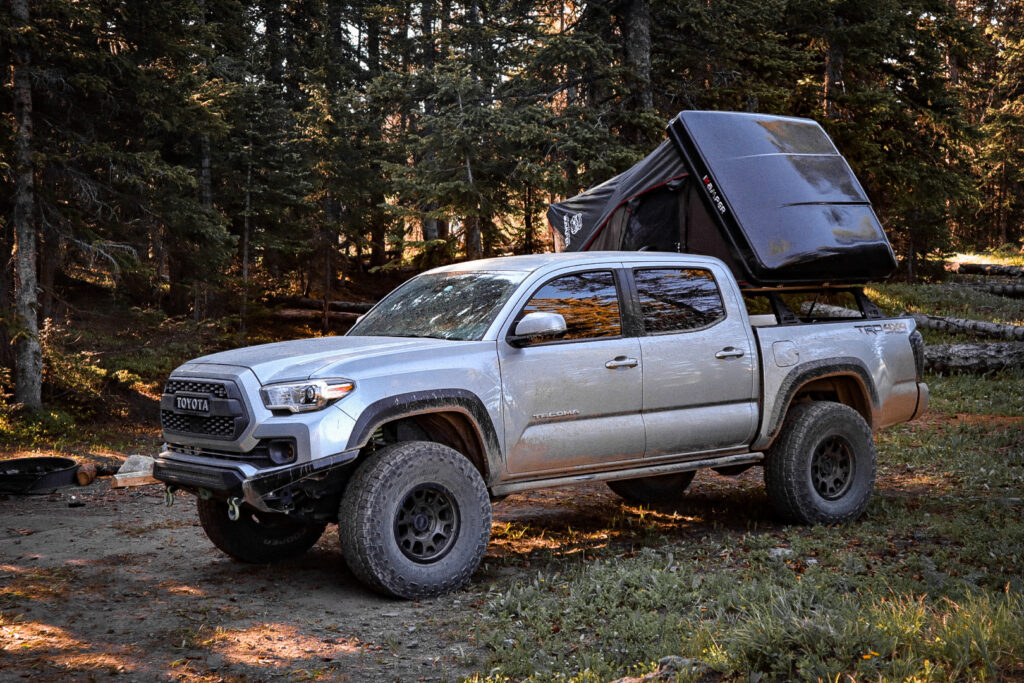
In conclusion, while the best overlanding vehicle often boils down to personal preference and specific needs, these models have proven time and again to be reliable companions on off-road adventures. Each offers a unique set of advantages, ensuring that there’s an overland vehicle for every kind of adventurer.
Customizing Your Overland Vehicle
Embarking on an overland adventure is not just about the destination; it’s also about the journey. And a significant part of that journey revolves around the vehicle you choose. While many vehicles come equipped with features suitable for overlanding, customizing your vehicle can elevate your experience, ensuring it’s tailored to your specific needs and preferences. Here’s a guide to some of the most popular and essential customizations.
1. Suspension Upgrades:
A good suspension system is crucial for off-roading. Upgrading to a heavy-duty suspension system can improve the vehicle’s ground clearance, load-carrying capacity, and overall off-road performance.
2. Roof Racks and Storage Solutions:
Space is a premium when overlanding. Roof racks, cargo boxes, and internal storage solutions can help organize and maximize space, ensuring you can carry all the essentials without clutter.
3. Off-Road Tires:
Standard tires might not cut it on rugged terrains. Investing in all-terrain or mud-terrain tires can provide better traction and durability, ensuring safer and smoother rides.
4. Protective Add-ons:
Skid plates, rock sliders, and bull bars can protect your vehicle from potential damages, especially when navigating rocky or dense terrains.
5. Advanced Navigation Systems:
While many vehicles come with built-in navigation, upgrading to a system designed for off-roading can provide topographical maps, trail data, and other essential information.
6. Lighting:
Extra LED lights, light bars, and fog lights can be invaluable for nighttime driving or during low visibility conditions, ensuring safety.
7. Recovery Gear:
Winches, traction boards, and high-lift jacks are essential for those unexpected moments when you might find yourself stuck.
8. Camping and Living Modifications:
Awnings, rooftop tents, and kitchen setups can transform your vehicle into a comfortable living space, making extended trips more enjoyable.
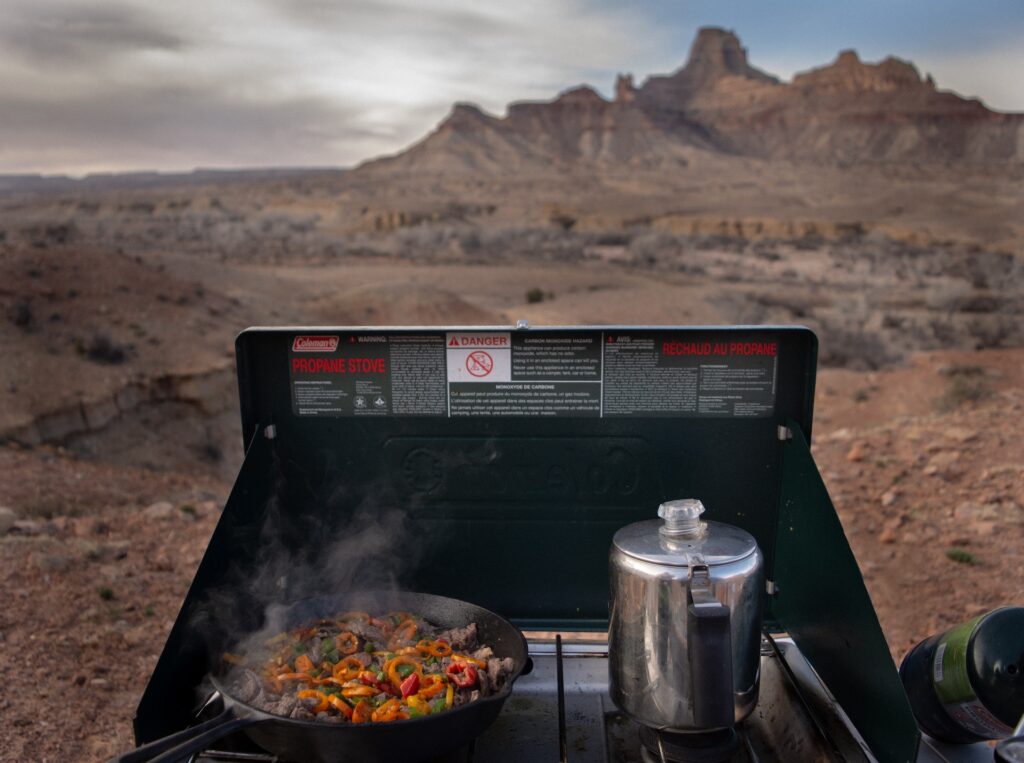
Customizing your overland vehicle is about more than just aesthetics; it’s about functionality, comfort, and safety. By investing in the right modifications, you can ensure that your vehicle is not only equipped to handle the challenges of overlanding but also provides a comfortable and memorable experience.
Overland Vehicle Gear Essentials
Overlanding is a unique blend of camping, off-roading, and extended road trips. While the vehicle itself is a significant component of the adventure, the gear you equip it with can make all the difference in ensuring a safe, comfortable, and memorable journey. Here’s a rundown of the essential gear every overlander should consider packing:
1. Navigation Tools:
While many rely on digital GPS systems, it’s wise to also have physical maps and a compass. They don’t require a battery and can be crucial in areas with poor signal reception.
2. Recovery Kit:
This should include items like a winch, traction mats, recovery straps, and a high-lift jack. These tools can be lifesavers in situations where your vehicle gets stuck.
3. Portable Air Compressor:
Being able to inflate or deflate your tires based on the terrain can improve traction and reduce the risk of punctures.
4. First Aid Kit:
Accidents can happen. A comprehensive first aid kit can address minor injuries and stabilize more serious ones until professional medical help is available.
5. Water Storage and Filtration:
Hydration is crucial. Large water jugs and a reliable water filtration system can ensure you have access to clean drinking water at all times.
6. Portable Power:
Solar panels, portable generators, and power banks can keep your devices charged and operational, especially during extended trips.
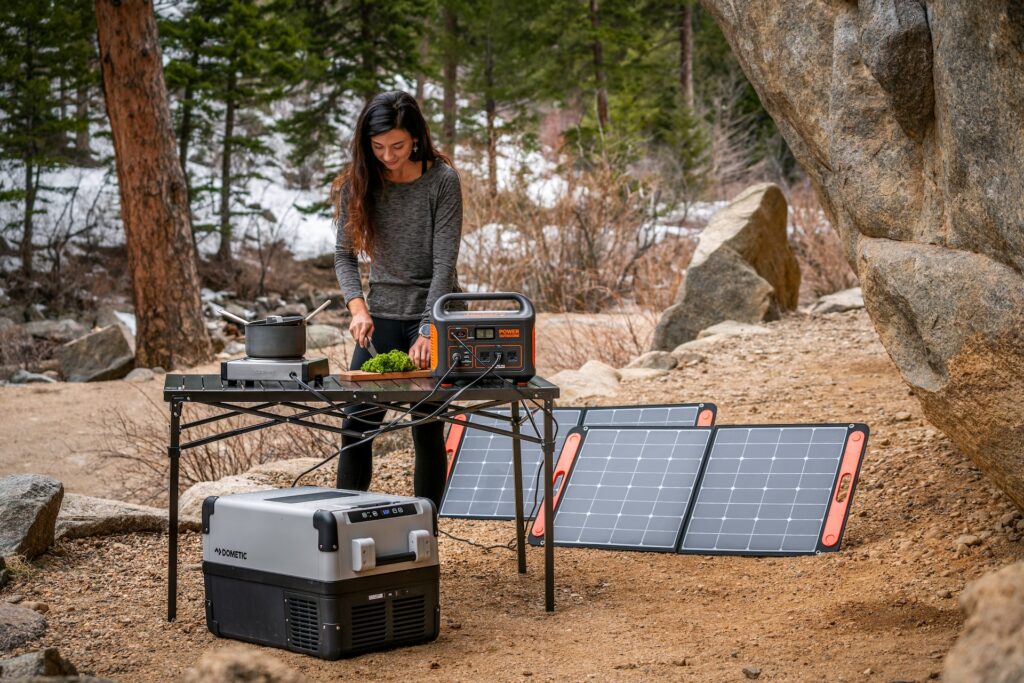
7. Cooking and Food Storage:
A portable stove, cooking utensils, and a cooler or portable fridge are essential for preparing and storing meals.
8. Shelter and Bedding:
Rooftop tents or ground tents, along with sleeping bags and pads, provide comfort during overnight stays.
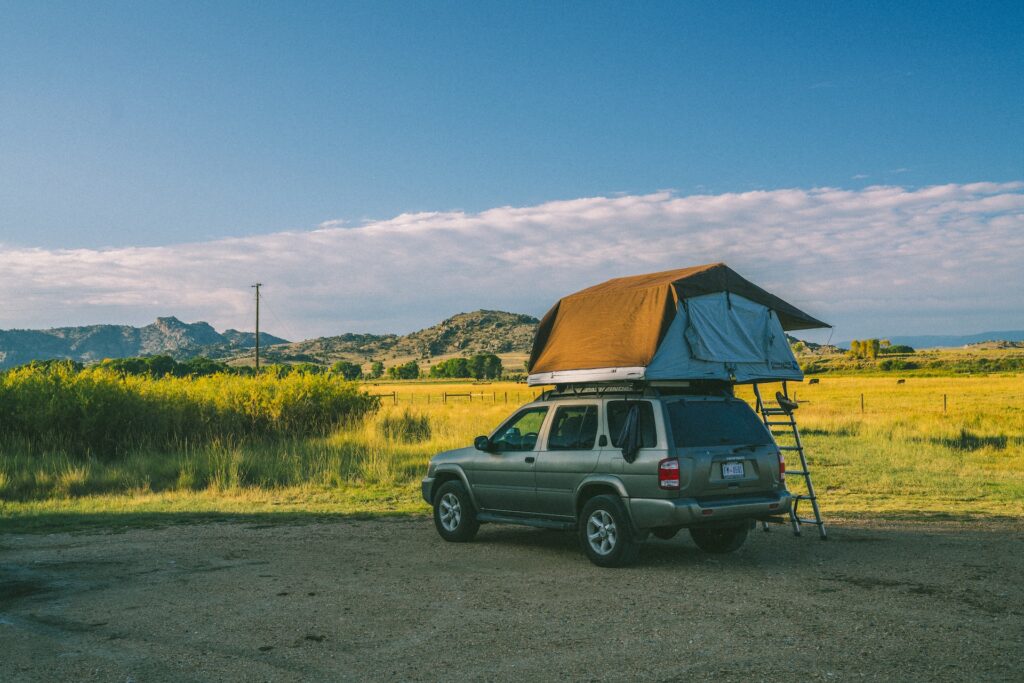
9. Communication Devices:
In areas with no cell reception, two-way radios or satellite phones can be crucial for communication, especially during emergencies.
10. Tool Kit and Spare Parts:
A basic tool kit, along with spare parts like fuses, belts, and hoses, can help address minor vehicle issues on the go.
Equipping your overland vehicle with these essentials ensures you’re prepared for a range of scenarios. While the open road and unpredictable terrains bring their own set of challenges, being well-prepared can make your overlanding experience smoother and more enjoyable.
Conclusion: The Ultimate Overland Vehicle Experience
Embarking on an overland journey is more than just a trip; it’s an experience that melds adventure, nature, and the thrill of the open road. Your overland vehicle is your companion, your shelter, and often, your lifeline. Equipping it correctly, understanding its capabilities, and respecting the environment you traverse are all integral to a successful and memorable expedition.
The world of overlanding offers endless possibilities, from serene landscapes to challenging terrains. Whether you’re a seasoned overlander or just starting out, understanding the nuances of your overland vehicle and the gear it requires can make all the difference. As you gear up for your next adventure, remember that preparation is key. Equip your vehicle, educate yourself, and embrace the journey. The open road awaits, and with the right overland vehicle by your side, there’s no limit to where you can go.

